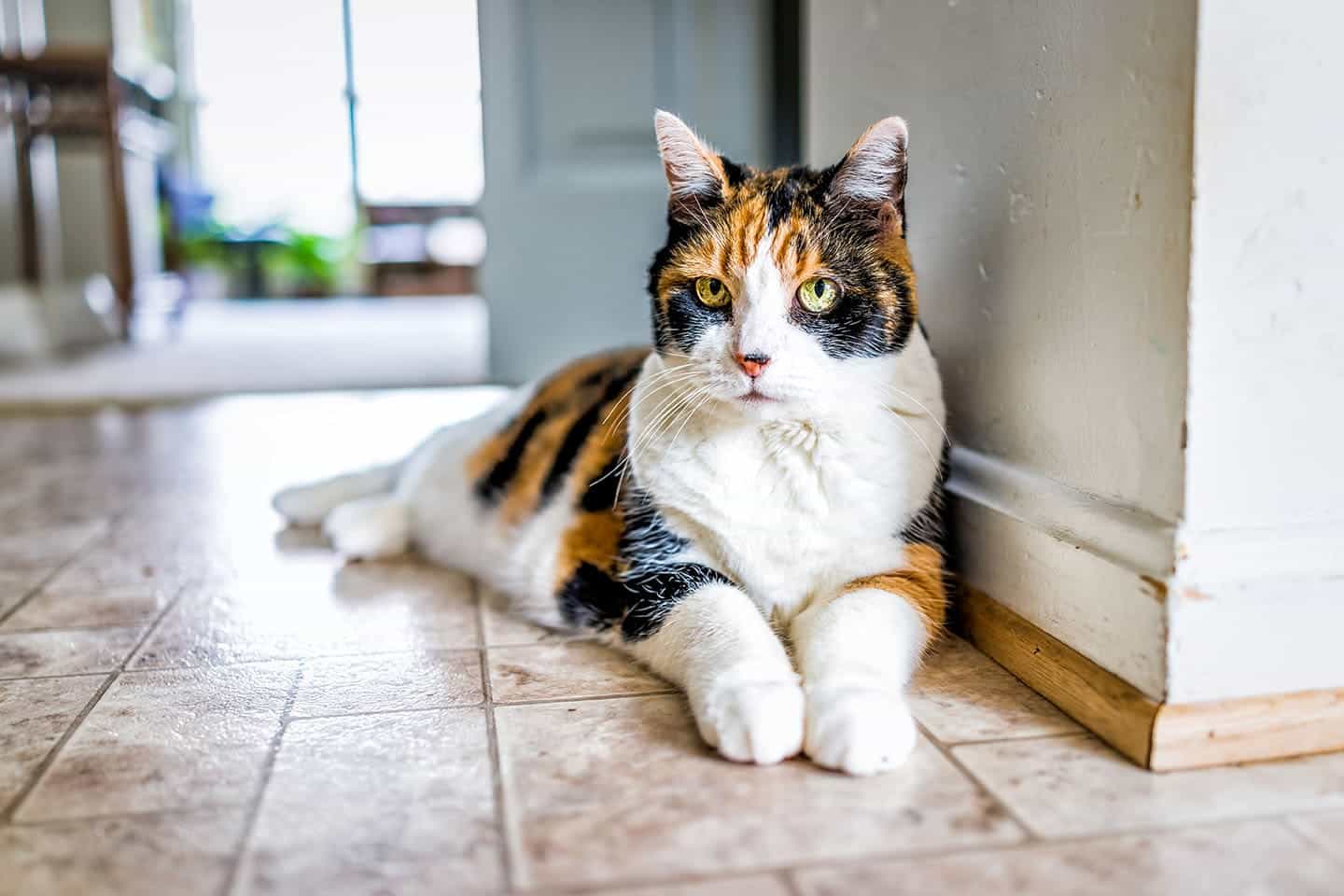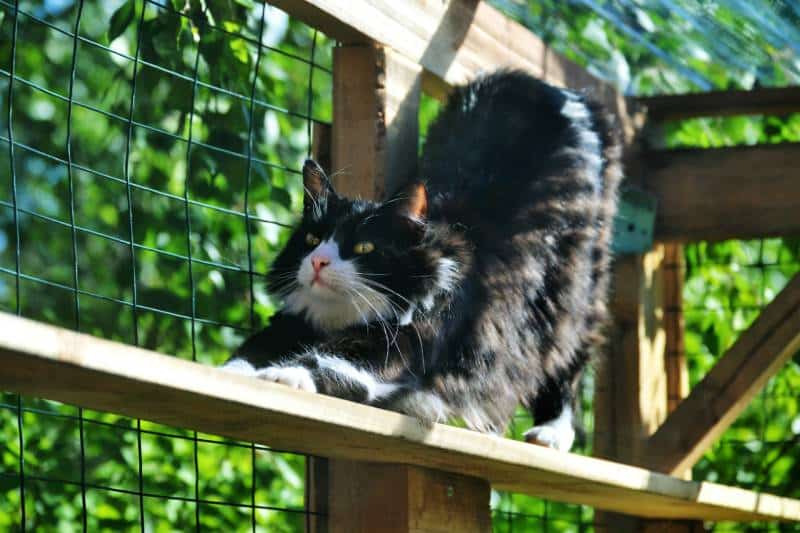An indoor cat can survive outside, but if your kitty has always been an indoor cat, you’ll need to slowly introduce her to the outdoors. Start with short, supervised outings and gradually work your way up to longer, unsupervised sessions.
How to Transition Your Cat to an Indoor/Outdoor Lifestyle
A slow start is essential if you want to give your cat some outdoor fun! Depending on your cat, this could take anywhere from two weeks to a month or longer.
It’s crucial that your cat first adjust to their indoor environment. Therefore, please ensure that before starting the process of acclimating them to indoor/outdoor living, Kitten spends a sufficient amount of time inside with his family. Your cat will feel lot more at ease in their new indoor/outdoor routine when they are comfortable and confident in their indoor setting.
To begin acclimating your cat to an indoor/outdoor lifestyle, follow these steps:
- Feed your cat indoors and on a regular schedule. Setting up an indoor feeding schedule can help acclimate your cat to an indoor/outdoor routine. Feeding outdoors can draw in wildlife and other cats, as well as reduce the likelihood that your cat will want to come inside.
- Begin by letting them spend only ten minutes at a time outside before gradually bringing them inside. o Permit them to become familiar with the sights, sounds, and smells of their new outdoor environment. o Keep an eye on them. To help your cat become accustomed to their yard and the surroundings, spend some time outside with them. o Do NOT let your cat out unsupervised initially. We advise you to watch them closely and to spend more time outside under supervision. o As soon as your cat comes back inside, give them a delicious treat. Try saying something like “It’s time to eat” in a cheerful voice, too, and eventually your cat will respond to your calling them back in. The more alluring the treat, the stronger the instinct to come back inside when it’s time!
- Establish a schedule by letting them go outside at the same time each day and bringing them inside at the same time each evening. o Do not let your cat stay outside at night. o Allow them to go outside prior to feeding time; after all, that’s where the food is!
o Maintain regular meal times; this will help their internal clock recognize when it’s feeding time. This will make it easier for you to always bring your cat inside at night so you won’t have to worry about his whereabouts.
- Ensure that your feline has a collar and tag on, or even better, invest in a microchip!
- For your cat’s outdoor access, try using the same door each day. Perhaps a door away from a busy street or busy neighbor, or one with good windows close by so you can see your cat is there, waiting to come inside?
- Be careful not to bring your dog inside or let them out at the same time as your cat. In this manner, a curious dog won’t scare off a cat that is ready to enter!
- Let your neighbors meet your cat. It’s best to let them know that your cat belongs to you because he might end up on their porch. Your neighbors can also contact you with any questions or concerns.
- Remember that annual veterinary checkups are crucial for both indoor and outdoor cats. Make sure you adhere to a consistent flea and deworming regimen.
- Keep your cat inside during extremely hot or cold temperatures.
- Declawed cats may find it far harder to survive on their own outside. It is advised that you select a non-declawed cat for both indoor and outdoor living.
The 10 Tips to Make an Indoor Cat an Outdoor Cat
Your house should always be your cat’s “base,” whether you recently brought a kitten home or adopted an adult cat. Give them some time to become acclimated to the interior of your house before letting them go outside. A contented indoor existence increases your cat’s likelihood of wanting to return home and gives them the impression that they always have a safe place to go when they’ve had enough of the great outdoors.

When a cat is accustomed to living indoors all the time, being outside can be quite overwhelming at first. Such cats frequently go outside, become scared, and then turn to running away and hiding from view. They are obviously in danger, and owners who discover their cherished pet has vanished will also find this to be concerning.
Leash training your cat is a very sensible way to enable them to go outside safely with you. Additionally, since the activity can be something you both look forward to every day, it gives you more opportunities to strengthen your bond with your cat. A cat on a leash also has the added benefit of being safer because they won’t run the risk of consuming something they shouldn’t, getting hurt, or getting lost because they will be under your supervision.
The effects that free-roaming cats have on the environment are another reason to think about leash training your cat. Despite their widespread popularity, cats are not native to many regions of the world.
Felis silvestris lybica, the wildcat that gave rise to domestic cats, was first seen in the fertile crescent during the Neolithic period in the Near East and in ancient Egypt during the Classical period. As a result, cats found on other continents are regarded as having been brought there by people and are therefore technically considered invasive species.
Cats that are allowed to roam unsupervised have devastating effects on local fauna, with some studies concluding that they kill billions of animals each year in the US alone 1 and exponentially more animals on a global scale. This is not without its risks to your pet as well, as prey can harbor diseases and pathogens that can be transmitted to your pet.
Lastly, it’s important to remember that it might be illegal in some countries for you to let your cat wander around unattended. As a result, walking your cat outside while wearing a leash and keeping an eye on them is the best option.
5. Consider Securing Your Yard
To make sure your cat only spends time outside, you might want to think about building an outdoor enclosure or just locking your yard. If you’re crafty, there are some fantastic DIY outdoor cat houses and enclosures available online.
Another idea is to cat-proof your yard with fencing. For instance, we saw slanted net barriers that are meant to keep cats from climbing over the main fence. You can rest easy knowing that your cat won’t stray and endanger themselves if you secure your yard.

FAQ
Will my cat come back if I let him outside?
Can I make a cat house outside?
Is it better to have an indoor cat or outdoor cat?